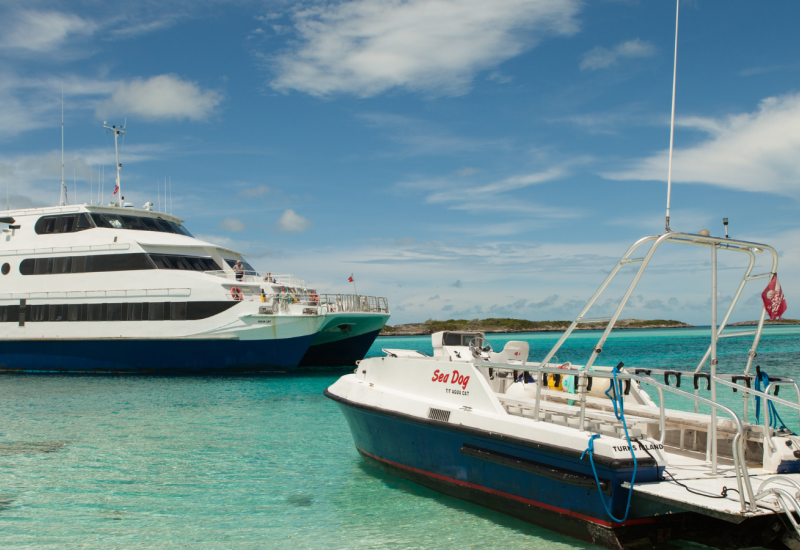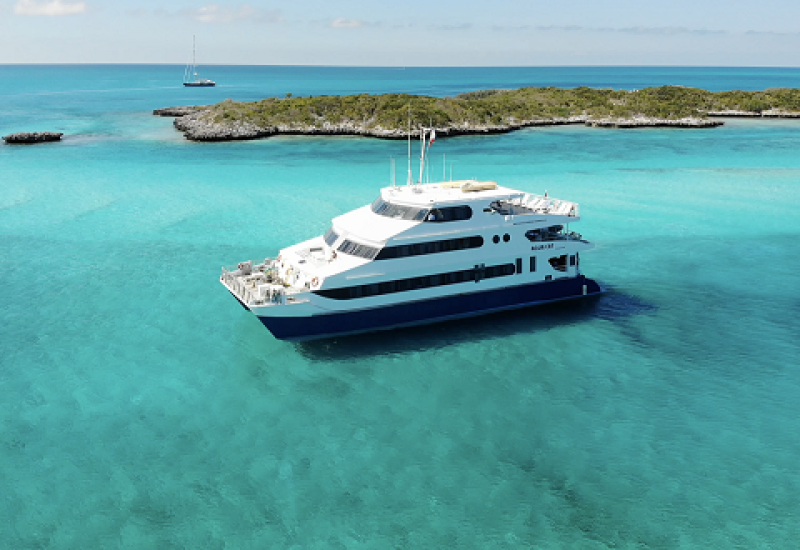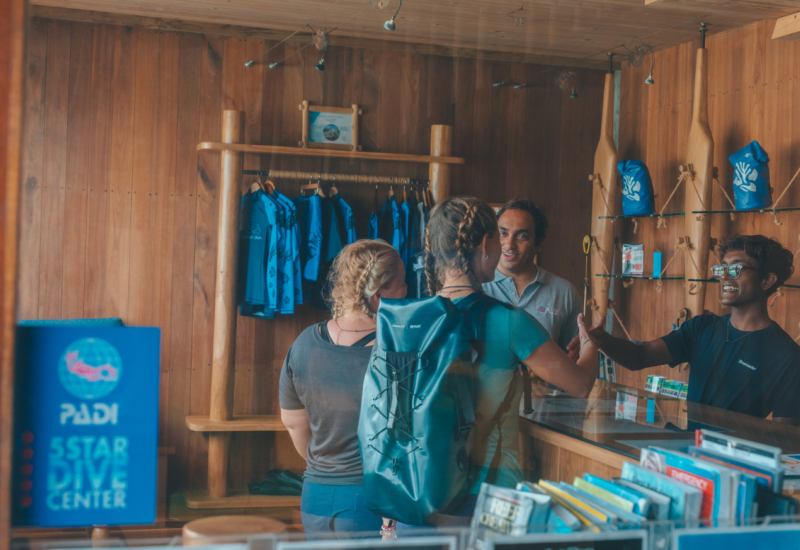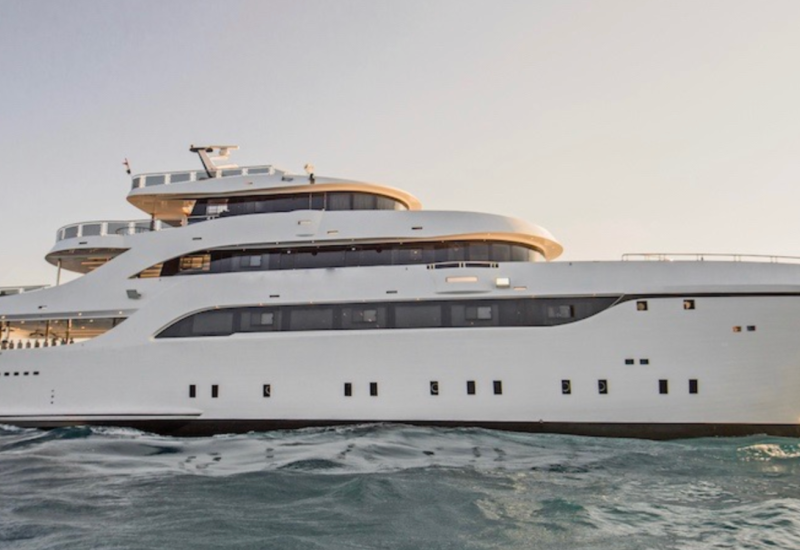Liveaboard Diving: Nai'a and the Whales of Tonga
It’s midafternoon, our first day in the Ha’apai island group of Tonga. Eighteen of us are aboard the 120-foot-long Nai’a, waiting for signals we’ve already come to know well: When the watch cries “Whales!” and the ship’s bell rings – no matter what you’re doing – grab a camera and run to the bow, because something is about to happen.
That morning we had watched 50-foot, 80,000-pound whales launch themselves out of the water and had our first in-water encounter, close passes by three massive males competing for a female.
Nai’a has been making its signature humpback whale cruises each August and September since 1996 — at 17 years, it’s the most experienced whale-encounter operation in existence. Tonga’s quiet lagoons are perfect calving and mating grounds; Nai’a is the welcoming committee for whales on their annual migration from Antarctica.
Arriving on deck, we see a mother and calf with an escort — an adult companion— just off the bow. We follow; once it’s clear they aren’t concerned, we board two inflatables and move near, then slip into the water. Down about 50 feet, the huge mother and escort rest, suspended upright, gazing up at us. The calf, perhaps a month old, moves between them and the surface.
Within moments, curiosity overcomes caution, and the calf swims to us, approaching to within a few feet. It’s already about 18 feet long, weighing around 2,000 pounds, its eyes bright and round with seeming wonder. I can barely fathom the incredible thrill I feel at being so close to— and so intently regarded by — these immense, beautiful creatures. After a nearly two-hour encounter, mother and calf give me a final appraisal from only feet away, and slowly disappear into the deep.
Nai’a Dive Guide
Reached from the entry island of Tongatapu by an 85-mile overnight run, the Ha’apai island group frequented by Nai’a is considered one of Tonga’s most beautiful, with 62 islands scattered in a northeasterly direction, only 17 inhabited. The dive sites — whether snorkeling whale encounters or the daily afternoon and night reef dives colored with healthy corals and lots of tropicals — aren’t typically even named, and are determined by whichever of several anchorages Nai’a ends up near, come late afternoon. Whether steep-sided, deepwater mounts or reef systems near the islands, the dives have lots of fish and rich macro life, especially live shells, nudibranchs and crustaceans.
The majority of the cruise is spent in the central part of Ha’apai, around the Nomuka, Kutu and Lifuka islands. Many of Tonga’s tribe of some 2,200 humpbacks spend their time here, and each day finds Nai’a wherever whales are spotted. They might be inside or outside the passes into open sea, off the islands, or in the interior of Ha’apai’s huge lagoon, where there is deep water as well as shoals and mounts.
The daily routine is simple: Wake at dawn for breakfast, go up on the bow as Nai’a begins its search, and be ready at any moment to don your wetsuit, grab your camera and jump into an inflatable skiff. Sometimes, even this routine wasn’t routine. On several days, it was just after dawn, with Nai’a still at anchor, when the whale call came. On one such morning, anchored off Lifuka just as breakfast was being brought to the table, dive leaders Erwin Filius and Nora Elfe came in. “We’ve just spotted a mother and calf logging (sleeping) on the surface. If anybody would like to give it a try, let’s go!”
Two full skiffs left Nai’a within minutes. As we neared the sleeping whales, we saw there were three, not two, as an escort was hanging just below the surface.
The escort immediately became protective and began displaying, apparently warning us off. We stopped and waited, not wanting to frighten the mother and calf. Suddenly, the escort rose out of the water in a spectacular breach, less than 50 yards from us. I captured a quick image with my housed camera on his next leap.
Then, it all changed. The mother and calf approached the lead skiff, and the calf began playing about on the surface. One group went in and had a 15-minute encounter with the calf while we waited for our turn. The whales finally moved off, then stopped a short distance away. We followed and slipped into the dawngray water. The whales let us come very close, the mother relaxing about 15 feet below the surface, the calf moving back and forth between her and us. I made image after image, then, it was back to Nai’a to finish breakfast interruptus.
On other days, interactions ensued in open water, far from any island. On one such occasion, we had all gathered at the bow when whales were spotted. It was a group of four apparently juvenile males, who sometimes form into packs until they are old enough to compete with the larger adult males. Though young, they were still big animals, the smallest probably a yearling at about 25 feet, the older ones bigger, at about 35 feet.
For nearly an hour we followed them as they played and displayed just off the bow, breaching, fluke-slapping, exhibiting pectoral fins (while doing a backstroke) and tail-slapping. Finally, they all came in around Nai’a, right at the ship’s hull, and began looking up at us, large eyes out of the water. When Nai’a stopped, they stayed, and we went in, jumping off the stern.
In an incredible 45-minute romp, the whales played with us — science teaches us not to anthropomorphize, but there is simply no other way to describe what was happening. They would swim through our midst, circle around, and then come back through us, blowing streams of bubbles from their blowholes, stopping occasionally to go head down and begin tail-slapping. At one point, just yards from us, all four began slapping in unison, massive tails sending shock waves through the water that you could feel through your chest. “Incredible” is the only way to describe this magical experience.
Five Reasons to Dive Tonga Aboard Nai’a:
1. Whales In-water encounters are of a scale and emotional impact that can scarcely be described, and we had them, multiple times per day, at least two out of every three days.
2. Spontaneity Nai’a and its crew have one dedicated purpose: to interact with whales. It means there is no routine, no set route: just find whales, and get close.
3. Pristine, Ethereal Beauty The setting for all this is the loveliest, untouched tropical environment one could ever imagine — the epitome of the idyllic, tranquil South Pacific — with Nai’a seemingly the only ship on the sea.
4. Comfort Nai’a’s deep, steel hull and 240-ton weight create the most stable ship I’ve ever experienced, with virtually no roll or yaw, even in open sea. With lots of space, luxurious appointments and excellent cuisine, comfort reigns.
5. Something For Everyone Our passengers were from six countries and included ardent divers, serious and first-time photographers and videographers, whale watchers, snorkelers and even non-water-loving spouses (who quickly became ardent whale-encounter snorkelers). All parties were equally thrilled.
Need to Know
>>When to Go Tours are August to September, prime time for the whales.
>>Dive Conditions It’s winter, with water temps of 74 degrees F and, on windy days, air temps in the 60s. Bring full 3 mm suits; with long hours in the skiffs, and hopping in and out of the water, vests and hoods are useful.
>>Operator Nai’a has nine staterooms, each with a private bath and air-conditioning, for 18 passengers. Entree choices include vegetarian. There’s a good dry camera area, and 15 friendly staff members, mostly Fijians with several local Tongans. Dive guides are PADI instructors and divemasters.
>>Price Tag Cruises — including all diving and air fills, meals and snacks, alcoholic beverages with meals, and a great kava party — are $5,724 for 11 days, $5,202 for 10 days (per person, double occupancy).
It’s mid-afternoon, our first day in the Ha’apai island group of Tonga. Eighteen of us are aboard the 120-foot-long Nai’a, waiting for signals we’ve already come to know well: When the watch cries “Whales!” and the ship’s bell rings – no matter what you’re doing – grab a camera and run to the bow, because something is about to happen.
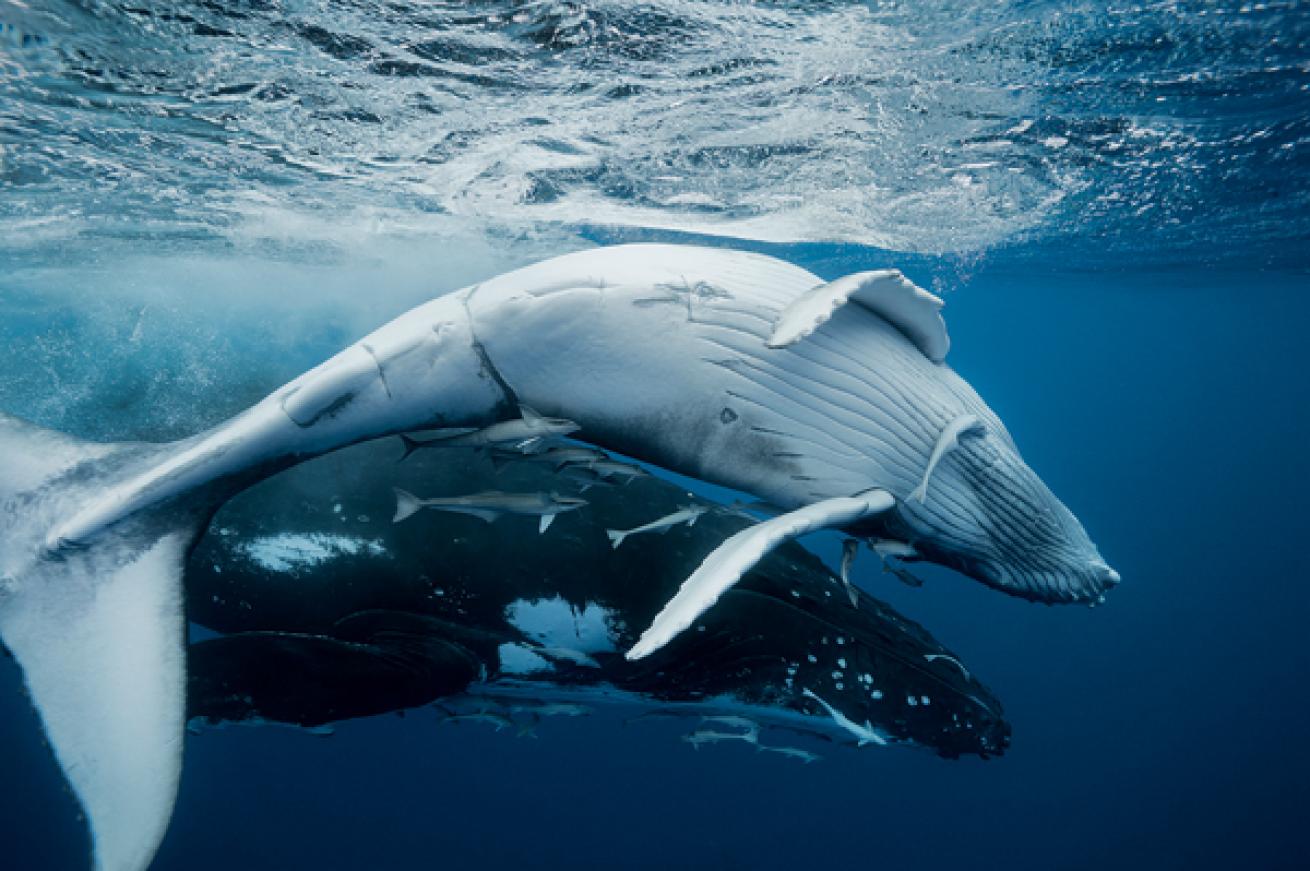
Brandon ColeA young humpback calf plays at the surface, rolling upside down above its watchful mother.
That morning we had watched 50-foot, 80,000-pound whales launch themselves out of the water and had our first in-water encounter, close passes by three massive males competing for a female.
Nai’a has been making its signature humpback whale cruises each August and September since 1996 — at 17 years, it’s the most experienced whale-encounter operation in existence. Tonga’s quiet lagoons are perfect calving and mating grounds; Nai’a is the welcoming committee for whales on their annual migration from Antarctica.
Arriving on deck, we see a mother and calf with an escort — an adult companion— just off the bow. We follow; once it’s clear they aren’t concerned, we board two inflatables and move near, then slip into the water. Down about 50 feet, the huge mother and escort rest, suspended upright, gazing up at us. The calf, perhaps a month old, moves between them and the surface.
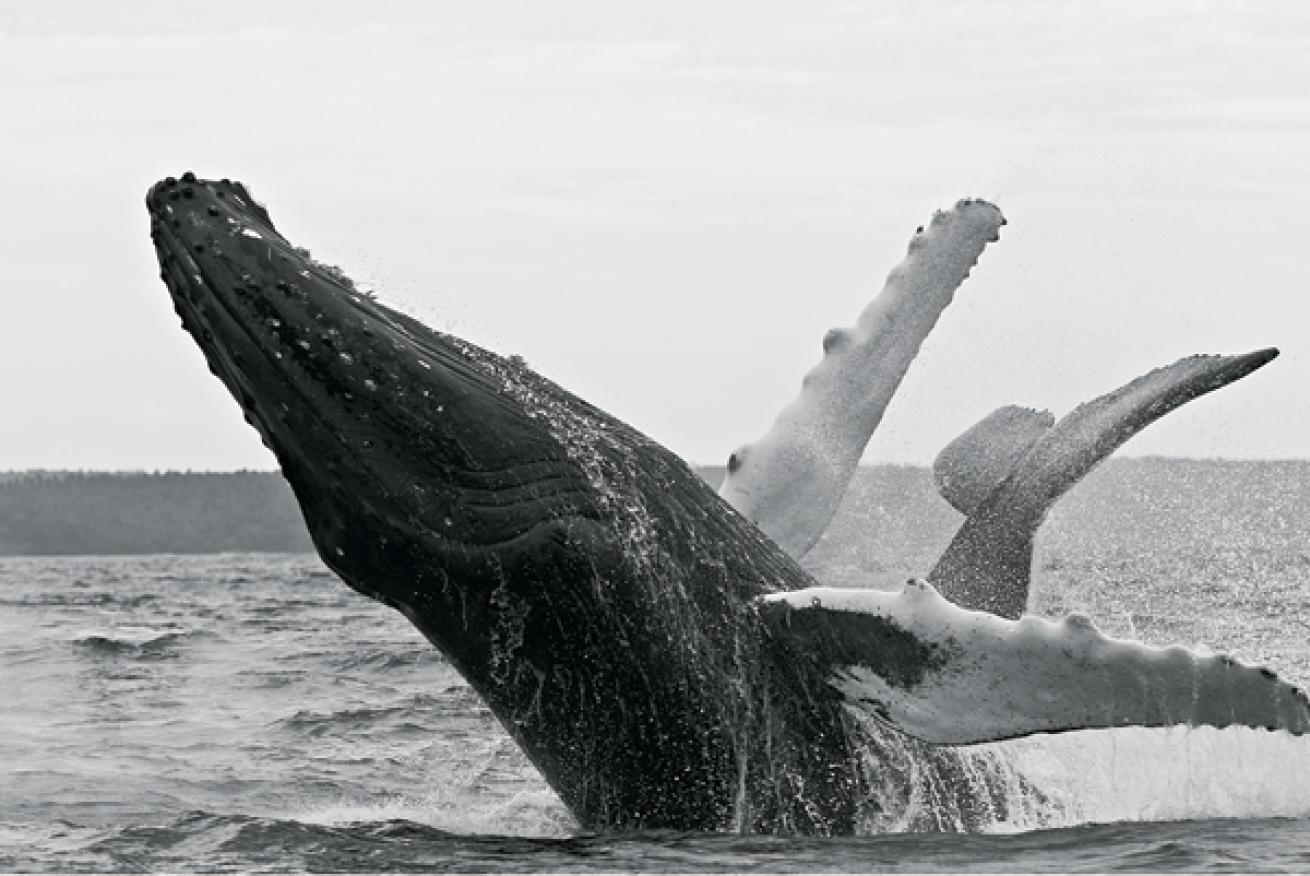
Brandon ColeSome experts believe breaching to be a form of communication.
Within moments, curiosity overcomes caution, and the calf swims to us, approaching to within a few feet. It’s already about 18 feet long, weighing around 2,000 pounds, its eyes bright and round with seeming wonder. I can barely fathom the incredible thrill I feel at being so close to— and so intently regarded by — these immense, beautiful creatures. After a nearly two-hour encounter, mother and calf give me a final appraisal from only feet away, and slowly disappear into the deep.
Nai’a Dive Guide
Reached from the entry island of Tongatapu by an 85-mile overnight run, the Ha’apai island group frequented by Nai’a is considered one of Tonga’s most beautiful, with 62 islands scattered in a northeasterly direction, only 17 inhabited. The dive sites — whether snorkeling whale encounters or the daily afternoon and night reef dives colored with healthy corals and lots of tropicals — aren’t typically even named, and are determined by whichever of several anchorages Nai’a ends up near, come late afternoon. Whether steep-sided, deepwater mounts or reef systems near the islands, the dives have lots of fish and rich macro life, especially live shells, nudibranchs and crustaceans.
The majority of the cruise is spent in the central part of Ha’apai, around the Nomuka, Kutu and Lifuka islands. Many of Tonga’s tribe of some 2,200 humpbacks spend their time here, and each day finds Nai’a wherever whales are spotted. They might be inside or outside the passes into open sea, off the islands, or in the interior of Ha’apai’s huge lagoon, where there is deep water as well as shoals and mounts.
The daily routine is simple: Wake at dawn for breakfast, go up on the bow as Nai’a begins its search, and be ready at any moment to don your wetsuit, grab your camera and jump into an inflatable skiff. Sometimes, even this routine wasn’t routine. On several days, it was just after dawn, with Nai’a still at anchor, when the whale call came. On one such morning, anchored off Lifuka just as breakfast was being brought to the table, dive leaders Erwin Filius and Nora Elfe came in. “We’ve just spotted a mother and calf logging (sleeping) on the surface. If anybody would like to give it a try, let’s go!”
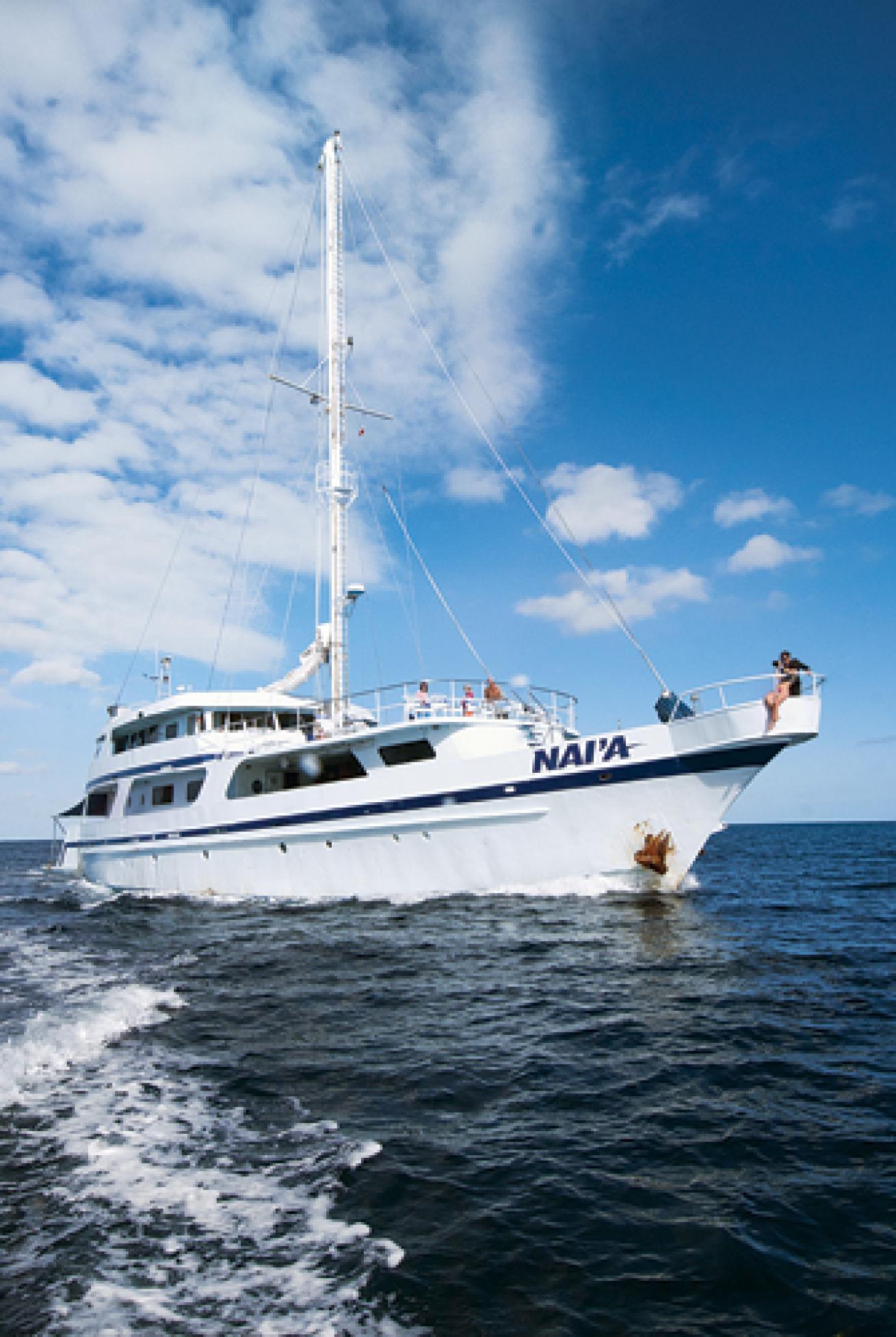
Al HornsbySince 1996, Nai’a has focused on whales.
Two full skiffs left Nai’a within minutes. As we neared the sleeping whales, we saw there were three, not two, as an escort was hanging just below the surface.
The escort immediately became protective and began displaying, apparently warning us off. We stopped and waited, not wanting to frighten the mother and calf. Suddenly, the escort rose out of the water in a spectacular breach, less than 50 yards from us. I captured a quick image with my housed camera on his next leap.
Then, it all changed. The mother and calf approached the lead skiff, and the calf began playing about on the surface. One group went in and had a 15-minute encounter with the calf while we waited for our turn. The whales finally moved off, then stopped a short distance away. We followed and slipped into the dawngray water. The whales let us come very close, the mother relaxing about 15 feet below the surface, the calf moving back and forth between her and us. I made image after image, then, it was back to Nai’a to finish breakfast interruptus.
On other days, interactions ensued in open water, far from any island. On one such occasion, we had all gathered at the bow when whales were spotted. It was a group of four apparently juvenile males, who sometimes form into packs until they are old enough to compete with the larger adult males. Though young, they were still big animals, the smallest probably a yearling at about 25 feet, the older ones bigger, at about 35 feet.
For nearly an hour we followed them as they played and displayed just off the bow, breaching, fluke-slapping, exhibiting pectoral fins (while doing a backstroke) and tail-slapping. Finally, they all came in around Nai’a, right at the ship’s hull, and began looking up at us, large eyes out of the water. When Nai’a stopped, they stayed, and we went in, jumping off the stern.
In an incredible 45-minute romp, the whales played with us — science teaches us not to anthropomorphize, but there is simply no other way to describe what was happening. They would swim through our midst, circle around, and then come back through us, blowing streams of bubbles from their blowholes, stopping occasionally to go head down and begin tail-slapping. At one point, just yards from us, all four began slapping in unison, massive tails sending shock waves through the water that you could feel through your chest. “Incredible” is the only way to describe this magical experience.
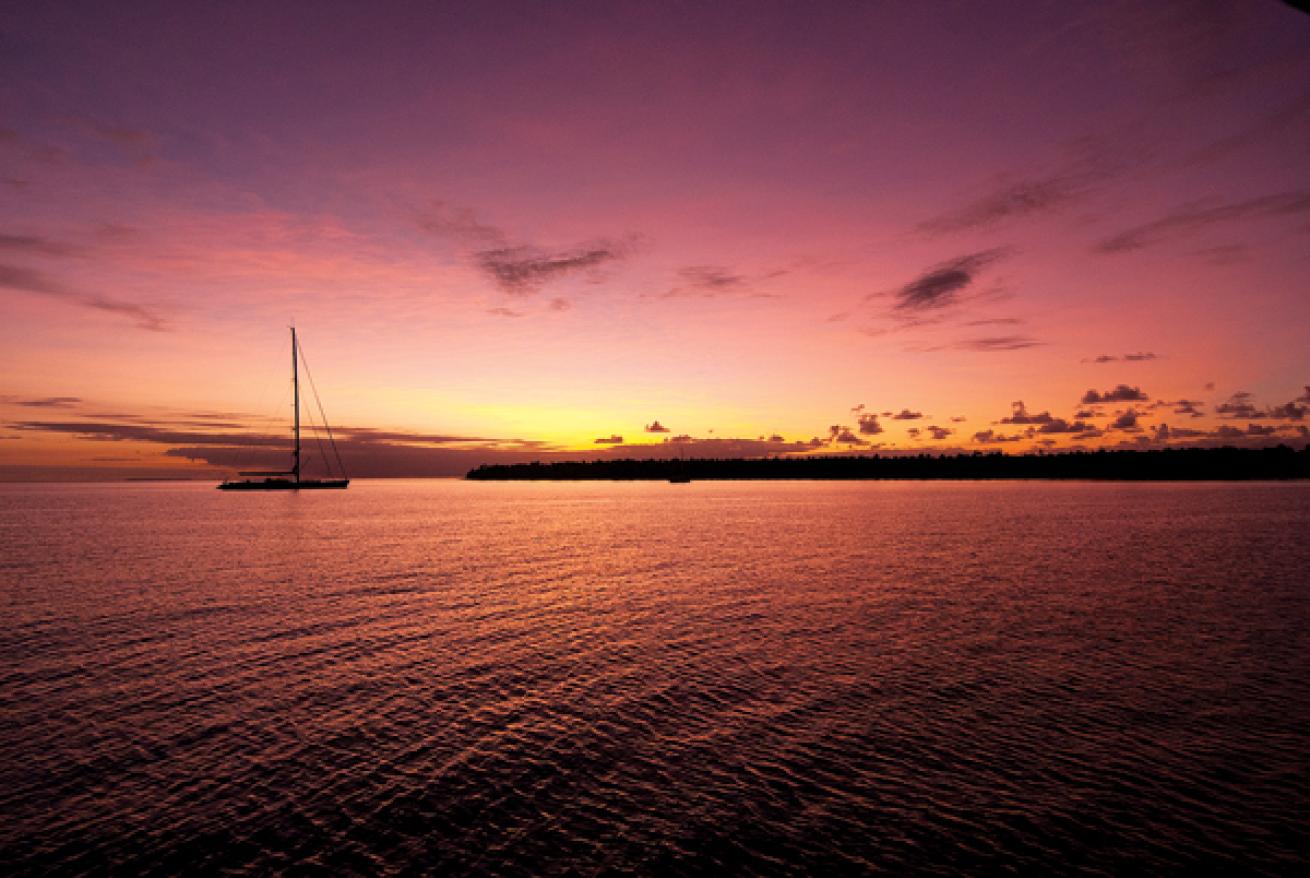
Al Hornsby"The setting for all this is the loveliest, untouched tropical environment one could ever imagine — the epitome of the idyllic, tranquil South Pacific."
Five Reasons to Dive Tonga Aboard Nai’a:
1. Whales In-water encounters are of a scale and emotional impact that can scarcely be described, and we had them, multiple times per day, at least two out of every three days.
2. Spontaneity Nai’a and its crew have one dedicated purpose: to interact with whales. It means there is no routine, no set route: just find whales, and get close.
3. Pristine, Ethereal Beauty The setting for all this is the loveliest, untouched tropical environment one could ever imagine — the epitome of the idyllic, tranquil South Pacific — with Nai’a seemingly the only ship on the sea.
4. Comfort Nai’a’s deep, steel hull and 240-ton weight create the most stable ship I’ve ever experienced, with virtually no roll or yaw, even in open sea. With lots of space, luxurious appointments and excellent cuisine, comfort reigns.
5. Something For Everyone Our passengers were from six countries and included ardent divers, serious and first-time photographers and videographers, whale watchers, snorkelers and even non-water-loving spouses (who quickly became ardent whale-encounter snorkelers). All parties were equally thrilled.
Need to Know
>>When to Go Tours are August to September, prime time for the whales.
>>Dive Conditions It’s winter, with water temps of 74 degrees F and, on windy days, air temps in the 60s. Bring full 3 mm suits; with long hours in the skiffs, and hopping in and out of the water, vests and hoods are useful.
>>Operator Nai’a has nine staterooms, each with a private bath and air-conditioning, for 18 passengers. Entree choices include vegetarian. There’s a good dry camera area, and 15 friendly staff members, mostly Fijians with several local Tongans. Dive guides are PADI instructors and divemasters.
>>Price Tag Cruises — including all diving and air fills, meals and snacks, alcoholic beverages with meals, and a great kava party — are $5,724 for 11 days, $5,202 for 10 days (per person, double occupancy).

